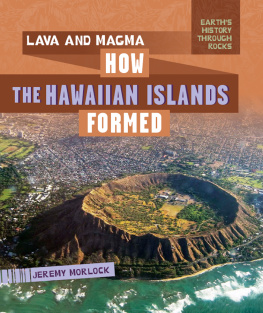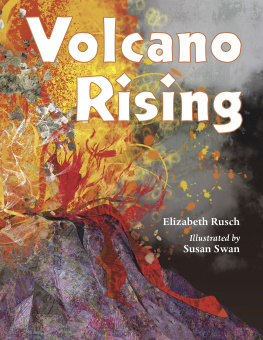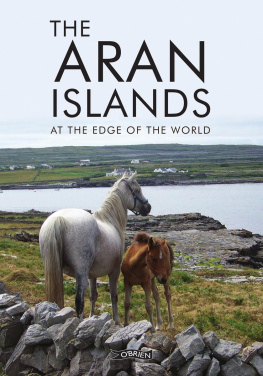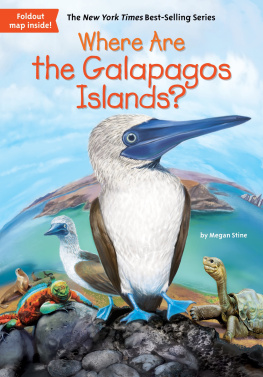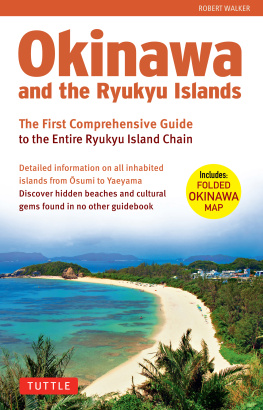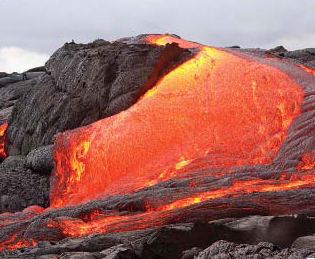Published in 2020 by The Rosen Publishing Group, Inc. 29 East 21st Street, New York, NY 10010
Copyright 2020 by The Rosen Publishing Group, Inc.
All rights reserved. No part of this book may be reproduced in any form without permission in writing from the publisher, except by a reviewer.
First Edition
Editor: Sarah Machajewski
Book Design: Tanya Dellaccio
Photo Credits: Cover Sky Noir Photography by Bill Dickinson/Moment/Getty Images; p. 5 Stocktrek Images/Getty Images; p. 7 (top) www.sandatlas.org/Shutterstock.com; pp. 7 (bottom), 22, 23 Courtesy of the United States Geology Survey; p. 9 Lisa Hoang/Shutterstock.com; p. 11 (top) Ron Bull/Toronto Star/ Getty Images; p. 11 (bottom) QAI Publishing/Universal Images Group/Getty Images; p. 13 (top) Maridav/ Shutterstock.com; pp. 13 (bottom), 19 Mario Tama/Getty Images News/Getty Images; p. 15 https://upload.wikimedia.org/wikipedia/commons/0/0f/Mauna_Kea_from_Mauna_Loa_Observatory%2C_Hawaii_-_20100913.jpg; p. 17 (top) George Rose/Getty Images News/Getty Images; pp. 17 (bottom), 21 Anadolu Agency/Getty Images; p. 18 VW Pics/Universal Images Group/Getty Images; p. 25 Andriy Prokopenko/Moment/Getty Images; p. 27 (top) Miguel Pereira/Cover/Getty Images; p. 27 (bottom) John Seaton Callahan/Moment/Getty Images; p. 29 Thinkstock/Stockbyte/Getty Images; p. 30 Felix Nendzig/Shutterstock.com.
Library of Congress Cataloging-in-Publication Data
Names: Morlock, Jeremy (Jeremy P.), author.
Title: Lava and magma : how the Hawaiian Islands formed / Jeremy Morlock. Description: New York : PowerKids Press, [2020] | Series: Earths history through rocks | Includes index.
Identifiers: LCCN 2018058708| ISBN 9781725301481 (pbk.) | ISBN 9781725301504 (library bound) | ISBN 9781725301498 (6 pack)
Subjects: LCSH: Geology--Hawaii--Juvenile literature. | Volcanoes--Hawaii--Juvenile literature. | Volcanism--Hawaii--Juvenile literature. | Hawaii--Juvenile literature.
Classification: LCC QE349.H3 M67 2020 | DDC 559.69--dc23
LC record available at https://lccn.loc.gov/2018058708
Manufactured in the United States of America
CPSIA Compliance Information: Batch #CSPK19. For Further Information contact Rosen Publishing, New York, New York at 1-800-237-9932.
THE HAWAIIAN ISLANDS
The state of Hawaii is composed of 137 islands in the Pacific Ocean, thousands of miles away from the mainland United States. Some of the islands are tiny, but some are much larger. People live on the seven biggest islands. The states largest island, which itself is named Hawaii, is also called the Big Island. Its more than 4,000 square miles (10,360 sq. km).
What made the islands? Why are they so far away from other land? These are questions people have wondered since the first Polynesian settlers came to live in Hawaii more than 1,000 years ago. The huge and powerful forces that created the Hawaiian Islands left behind clues in the rocks found there. These forces are still making their mark, and the changes happening today tell us a lot about the past.
AN ARCHIPELAGO AT SEA
The Hawaiian Islands are an archipelago. The Hawaiian archipelago includes reefs and atolls. Reefs are ridges near the surface of the water. They can be made of rocks or sand. Reefs can also be made of corals, which are tiny animals that live underwater, and the layers of minerals they excrete. An atoll is a ring-shaped coral island.
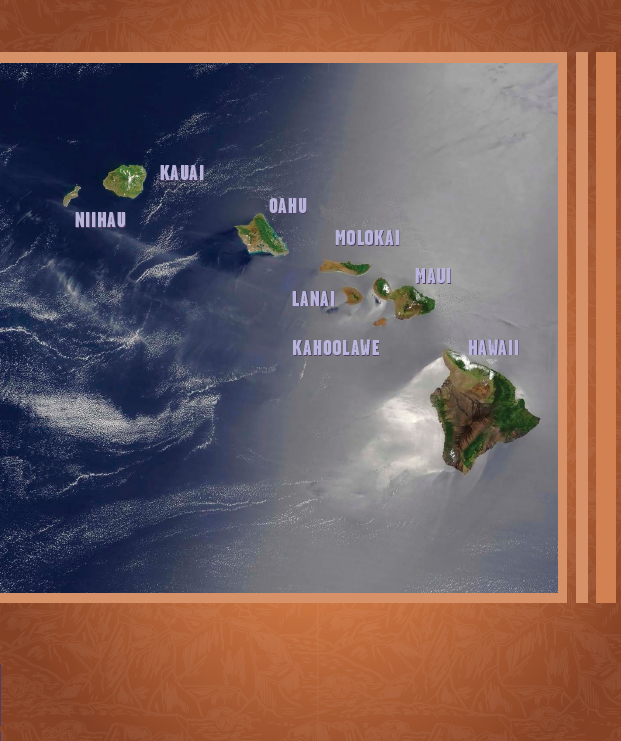
The larger islands of Niihau, Kauai, Oahu, Molokai, Lanai, Kahoolawe, Maui, and Hawaii can be seen in this picture taken by a satellite. No one lives on Kahoolawe, the smallest of the eight.
STUDYING HAWAIIS PAST AND PRESENT
From the shape of its mountains to the feel of its dirt, every aspect of Hawaiis geological features gives us clues about its past. Geologists are scientists who study the processes that shape Earth. Some of these processes happen quickly, while others take a long time.
Hawaiis islands began as volcanoes that erupted at the bottom of the ocean. A volcano is an opening in Earths crust from which molten rock, gas, and other material escape from inside the planet. This is called an eruption.
The volcanoes that created the Hawaiian Islands began erupting millions of years ago. The lava cooled and hardened into rock, and it built up more layers with each new eruption. Eventually, the islands began rising above the waters surface.
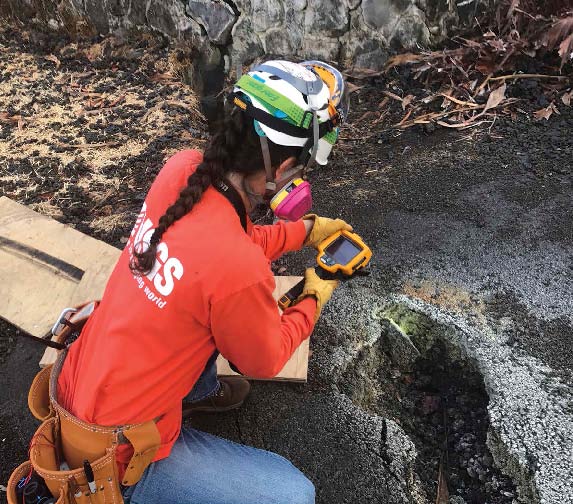
A geologist measures the temperature of a crack in the ground caused by a volcano. She learned it was 200F (93C).
READING THE ROCKS
MOLTEN ROCK IS CALLED MAGMA WHEN ITS INSIDE THE EARTH. WHEN IT FLOWS ONTO EARTHS SURFACE, ITS CALLED LAVA. COOLED AND HARDENED LAVA FORMS IGNEOUS ROCK.
A HOT SPOT UNDER THE OCEAN
The theory of plate tectonics explains that the ground beneath our feet is constantly moving. This explains why there are seven continents on Earth and how volcanic islands such as the Hawaiian Islands formed. According to this theory, Earths lithosphere is made of large plates. These huge pieces of solid rock slowly float on top of the lower mantle, which is made of soft, fluid rock.
Most volcanoes form in places where tectonic plates are pushing against or pulling away from each other. However, Hawaii is on the Pacific plate in a location far from its edges. Scientists needed a new theory to explain how those islands formed. Now they believe that a hot spot under the ocean created the volcanoes.
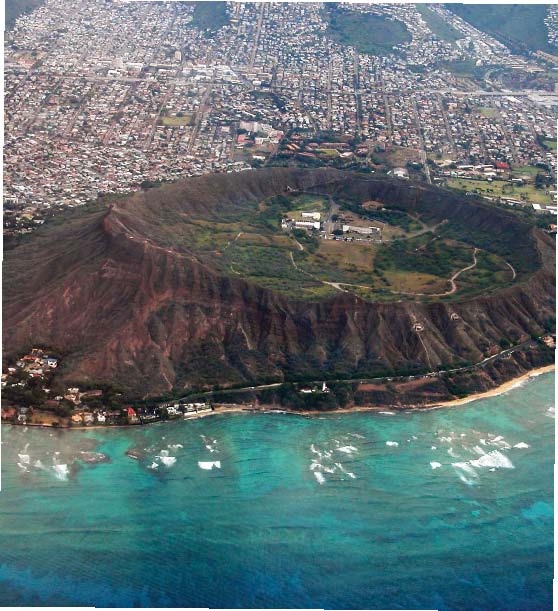
Diamond Head crater on the island of Oahu was made by a volcanic eruption about 300,000 years ago. The materials thrown out of the volcano settled together and formed a kind of rock called tuff
A HOTBED OF ACTIVITY
Hot spots form when a tectonic plate moves over a very hot part of Earths lower mantle. Magma rises and, with extreme levels of heat and pressure, pushes through the solid crust. The very hot part stays in a fixed location, while the plate above moves away from it.This is how chains of islands form. Theyre sometimes called hot spot tracks.
A CHAIN OF VOLCANOES
The chain of islands that is Hawaii was likely created by a hot spot under the Pacific plate. As the plate moved, the first islands stopped growing and new ones formed from new volcanic eruptions. For many years, scientists thought the hot spot stayed in place while the plate moved. Now, some think the hot spot moves too.
The chain of Hawaiian islands also includes underwater mountains called seamounts. Geologists call this trail of volcanoes the Hawaiian-Emperor seamount chain. The newest mountains and islands are closest to the volcanoes that are still active. The youngest seamount in the Hawaiian chain is called Loihi. If it continues to grow, it will eventually become the next island in the chain.

